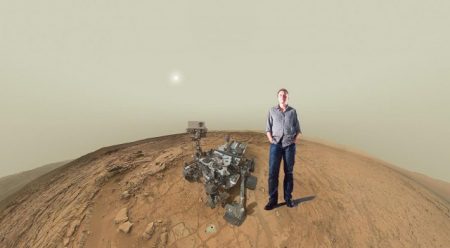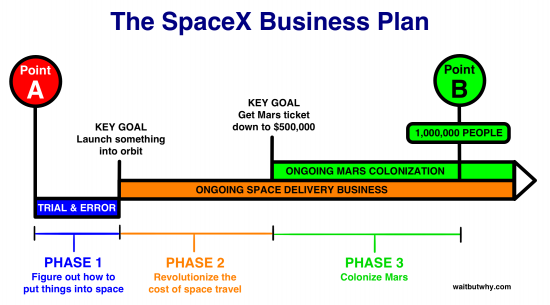July 31, 2017 – SpaceX has proven itself in many ways in the last year. The frequency of launches, the successful return of first stage boosters, their reuse, and the reuse of the Dragon capsule all suggest that the company’s strategy and technical skill to lower the cost to orbit is working.
Dragon 1.0 is to be replaced by 2.0, a version that will have life support and landing systems to carry human crews to orbit and back. Beyond that Elon Musk, SpaceX’s founder continues to wax poetic about going to the Moon and Mars, colonizing both, and launching his next generation heavy-lift rocket. Only thing is, what looked good on paper, is not necessarily translating to physical hardware reality.

Dragon 2.0 when first unveiled was supposed to be able upon reentry to do a controlled descent and land on the ground using built-in engines with 120,000 pounds of thrust. That meant extendable landing legs as a requirement during the last few seconds of descent. The legs would be released from the heat shield which in itself was problematic. But legs are no longer part of the Dragon 2.0 design specification. Instead the capsule will do the less elegant thing, landing in water just like its Apollo predecessor. And it appears the descent engines are gone as well. Now Dragon 2.0 will have a launch abort system similar to Apollo, a rocket attached to the capsule shroud. Dragon 2.0 will, however, include a docking adaptor and maneuverability to mate with the International Space Station (ISS), something Dragon 1.0 does not do. Today SpaceX Dragon missions get grabbed by the Canadarm and placed into a docking port upon arrival at ISS.
Then there is the Red Dragon, the planned effort to send an enhanced Dragon 2.0 to Mars. The original plan was to use the Falcon Heavy rocket (see discussion below) to put Red Dragon on the surface of Mars using a supersonic retro-propulsion technology that had yet to be invented. It was thought that enhanced versions of the descent and landing engines in Dragon 2.0 would suffice. But the thinness of the Martian atmosphere combined with the capsule weight has made this fanciful if not elegant solution a non-starter. Mars will not be easy to land on when delivering large payloads. That’s why the descent of the Curiosity Rover involved such an elaborate scheme, the sky crane, to get the payload safely to the planet surface. So it appears that the Red Dragon mission is off for now.
That brings us to SpaceX next big project, the Falcon Heavy. First conceived as three Falcon 9 first stages strapped together, it’s turned out to be far more complicated. SpaceX had to redesign the airframe for the central first stage to deal with extra vibration and stresses from the combined weight of the three boosters. Then it was necessary to design a separation system to release the attached first stages. What has been retained is the ability to land all three components of the first stage for reuse.
SpaceX plans to do its first Falcon Heavy test flight as early as November 2017 and have its first paying customer use the launcher sometime in 2018. Then SpaceX plans to combine the new Dragon 2.0 with a Falcon Heavy and send two paying passengers on a flight to take them around the Moon and back to Earth, a public relations event if anything.
Finally, there is the plan to colonize Mars. When the 2016 big reveal was made about Musk’s plans to create a Martian colony with one million inhabitants by mid-century, he described the Mars Colonial Transporter and a plan for a fleet of 1,000 interplanetary spaceships that would ferry 100 colonists at a time plus supplies to the planet as early as 2025. Musk has since revisited his Mars architecture, scaling it down so it can be used in low-Earth and high-Earth orbit, and even as a transport system for Moon missions. Musk intends to reveal his revised Mars architecture at a conference in September to be held Down Under, in Adelaide, Australia.
But despite the fantasy that accompanies so many of Musk’s pronouncements, one cannot discount what SpaceX has accomplished to date with multiple successes in launching, recovering and relaunching first-stage Falcon 9 booster rockets, and creating the first reusable space capsule in Dragon 1.0. The frequency of launches has also been astounding with 2017 completed and planned numbering 20, and a manifest of another 55 planned for 2018 and beyond. No other national agency or private company can match the numbers which are a true acknowledgment of SpaceX achievements. So putting up with the dreams is a small price to pay.









